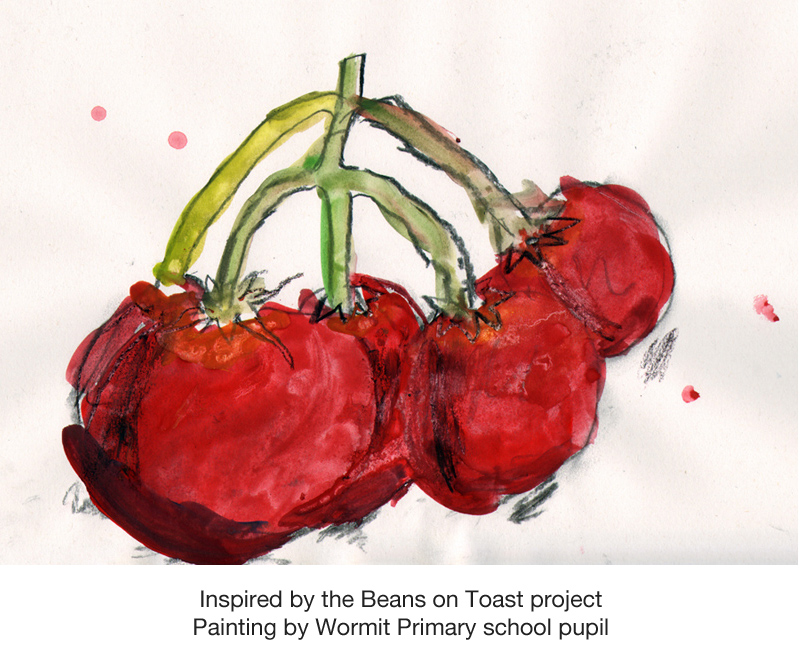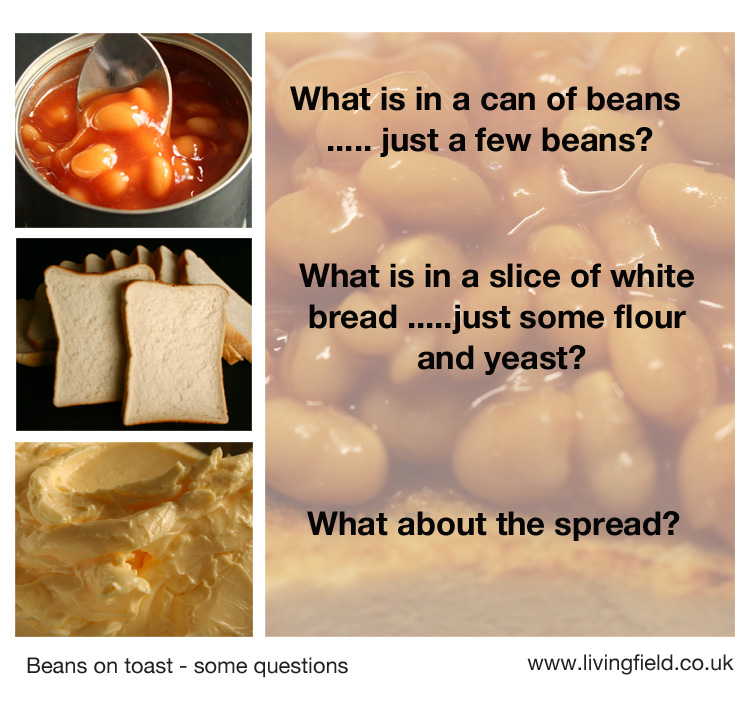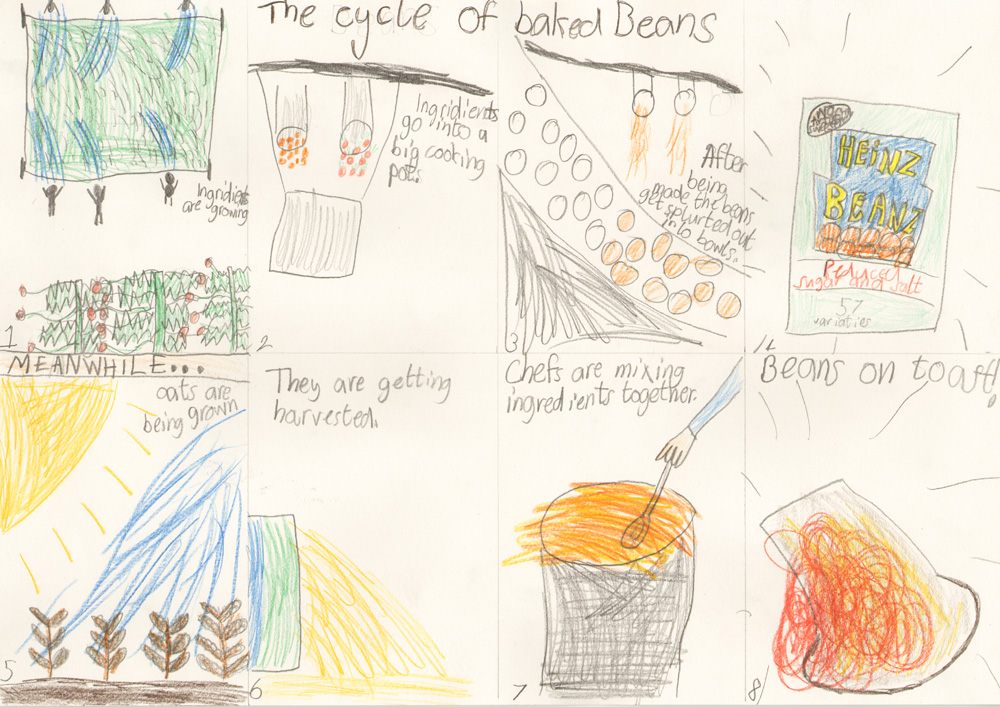The famous Beans on Toast Project was started 7 years ago by student Sarah Doherty and artist Jean Duncan with Geoff Squire and other members of the Living Field team [1]. The project looked at the origins of this seemingly simple meal.
Not so simple in fact – 10 crops, grown in four continents and using masses of water and other precious resources – the product of a highly complex supply chain leading to a tin, a packet and a tub.
This example of the worldwide growing and sourcing of products that go into the food we eat has been used many times by the Living Field, most recently at a Citizen’s Jury event at the Scottish Parliament in March.

Beans on toast a few years on…
Sarah’s been reflecting on the project. She writes –
“Seven years on, I look back at the ‘water footprint’ for the Beans on Toast project as an eye-opening experience!
It was a reminder that there is a story behind everything. Almost everything we eat has travelled a long way to get on our plates. For so much water to go into the humble beans on toast – it baffles me how much more water and effort goes into producing other things.
I recently took up sewing and have been struck at how expensive it is to buy material for making home-made clothes. When mass- produced for high street stores, clothes may seem easy and cheap. However, making material is an energy and water intensive process too often involving crops for fibres such as cotton and linen.
I’m certainly more mindful of this now which is why I’m learning to cut my wardrobe down to what I really use and like the most!
At the Citizen’s Jury Scottish Parliament
Geoff was asked to attend a Citizen’s Jury as a specialist assisting the Jurors with background information on the topic being considered.
He used the Beans on Toast example [2] to show, first, that much of the food we eat is not grown here but imported, and second, that most of our pre-prepared food is made from mixing the products of many different crops grown using the resources of other countries.
Beans on Toast relies on haricot bean, tomato, oil palm, soybean, wheat, maize, sugar cane, paprika, onion, and oilseed rape ….. and that’s just the main ingredients. And the food on one plate of it needs several bathfulls of water.

The famous Beans on Toast project continues …
Beans on Toast is an excellent example to show that we need to use less of other countries’ resources and more of our own.
What’s known as the legume gap or protein gap – the difference between home grown and imports – is massive. We grow just a few percent of the plant protein needed for feeding people and farm animals.
We have been adding to the information on sourcing food and estimating how much water and nutrients it takes to grow and process food like this [3]. Beans on Toast lives ….
To see the original pages –
- Beans on Toast (introduction)
- Beans on toast – a liquid lunch
- Seed to sewer – the water footprint
- Where does our food come from? (schools roadshow)

Sources, links
[1] Sarah was studying at Durham University when she worked at the James Hutton Institute for about a year in 2012 . She has kept in touch. She last visited in summer 2018. Jean Duncan, who worked with Sarah on educational projects with local schools, still works with the Living Field.
[2] The Citizens Jury event was held at the Scottish Parliament in Edinburgh, 29-31 March 2019. Information at the curvedflatlands web page Citizens Jury at the Scottish Parliament.
[3] The EU TRUE project runs currently, coordinated at the James Hutton Institute. Among its aims is to study the global food and feed supply chains, to cut waste and and to raise local production. It’s full title is Transition Paths to Sustainable Legume-based systems in Europe https://www.true-project.eu
Contact for this page: geoff.squire@hutton.ac.uk
